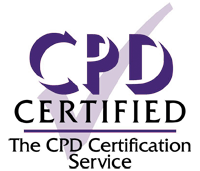The phrase ‘burnout’ is often heard, but what is it, and what are the early warning signs? Importantly, how can it be prevented or managed?
Over the last few years, health professional wellbeing, mental health, and burnout have come to the limelight, but is this just a phenomenon that has occurred because of this pandemic? Not exactly. The term ‘burnout’ was first described by Herbert Freudenberger in 1974 [1].
Although it is not considered a mental illness, it can be described as a consequence of workplace stress characterised by exhaustion, mental distance from the job and reduced efficacy. The COVID-19 pandemic has exacerbated burnout for sure, but the signs have been there for many years. Doctors are at an increased risk of burnout because of long working hours, delayed gratification due to relatively long training, challenges with work and home balance, and challenges associated with patient care, especially in this changing healthcare environment.
“A 2015 study of over 35,000 physicians reported a least one symptom of burnout in 54% of respondents, compared to 46% of doctors in 2011”
Burnout is something that can be addressed if recognised and acknowledged. The early signs can be the feeling of being drained or tired most of the time, with sleep disturbance and inability to switch off. This can lead to emotional exhaustion, lack of empathy and accomplishment at work, and then finally disillusionment, poor motivation, not caring about your work, wanting to leave early, and not looking forward to work. Do some of these symptoms apply to you? Well, you won’t be alone; the chances are that several of your colleagues will have similar thoughts. Most research in the field of burnout has come from the USA. A 2015 study of over 35,000 physicians reported a least one symptom of burnout in 54% of respondents, compared to 46% of doctors in 2011. Satisfaction with work-life balance was also reduced, with only 41% of respondents having a healthy balance [2].
So, burnout was prevalent before this pandemic, but now, emotional and physical exhaustion have increased dramatically, with many more healthcare professionals wanting to improve their wellbeing and work-life balance, and some even choosing to leave the profession. But what causes burnout? Lack of respect from employers, too many bureaucratic tasks and spending too many hours with a lack of control or autonomy are some of the biggest contributors.
“There is also a sense of compassion fatigue, which is characterised by a gradual erosion of empathy, hope and compassion with increasing bitterness at work, contributing to a toxic working environment”
Burnout can have profound consequences on individuals, with decreased professionalism, drug and alcohol abuse, breakdown of personal relationships, depression and suicide all being linked to its presence. It also has an adverse effect on patient safety, with an increased rate of major surgical complications and decreased patient satisfaction. There is also a sense of compassion fatigue, which is characterised by a gradual erosion of empathy, hope and compassion with increasing bitterness at work, contributing to a toxic working environment [3].
Recognising burnout in others can be relatively easy. Colleagues who are rude, grumpy, or angry are easy to spot, but what about those who withdraw from social situations, have unexplained absences, suffer from anxiety or sadness, are constantly worrying and find difficulty in decision-making. All these are manifestations of burnout, and being able to recognise these in others is the first step in addressing the problem.
So, what helps? It’s not a surprise that having a close team with whom you can confide and discuss work-related stress and issues helps significantly. Being able to ask for help from co-workers in a supportive environment can reduce the perceived stress at work and allows colleagues to help improve the working environment. This is a team effort; if one of you is feeling burnout, the chances are that there are others in the team that also feel that way but may not want to share it.
So how can we prevent burnout? I particularly like the Royal College of Physicians and Surgeons of Glasgow’s idea of ‘The Selfs’. These are self-awareness; self-care, including basic needs, exercise, meditation, cooking, or whatever works for you; and self-compassion, having a space to reflect and share, but being aware of your own critical eye [4]. Their website has lots of resources on how to improve resilience, wellbeing, and support. Helping others is also important; taking time to ask colleagues ‘how have you been feeling?’ or ‘are you OK? I’ve noticed you don’t seem yourself’ and giving them a space to listen can be all that is needed for them to open and reveal the symptoms of burnout.
“I find that having 15 minutes to myself to think about nothing, control my breathing and find peace in a quiet room is beneficial to my stress levels”
The pandemic has made it difficult for people to de-stress in their usual fashion. Sport, exercise and holidays are common ways to take time away from work. However, with gyms being closed and travel being so severely limited recently, people have found mindfulness and meditation have a positive impact on their mental health. I have practised mindfulness ever since I became a consultant in 2013.

I find that having 15 minutes to myself to think about nothing, control my breathing and find peace in a quiet room is beneficial to my stress levels, particularly when I am on call for emergencies. More recently, I’ve recognised the early symptoms of burnout and have increased my time away from work, particularly exercising with my bulldog, Rupert. I think this is an active form of mindfulness, as I spend these hours not thinking about work but clearing my mind and having some exercise to boot.
In summary, emotional distress, stress and burnout are common problems that have been exacerbated by the pandemic. Awareness and self-management are our responsibility, and the wellbeing of healthcare staff must remain a priority. We must ‘build back better’ where wellbeing is a focus and a sustained approach is essential, with workload, culture and leadership needing to be addressed to ensure that we not only recognise but take steps to prevent burnout in our workplaces.
References
1. Freudenberger HJ. Staff burn-out. Journal of Social Issues 1974;30:159-65.
2. Shanafelt TD, Hasan O, Dyrbye LN, et al. Changes in burnout and satisfaction with work-life balance in physicians and the general US working population between 2011 and 2014. Mayo Clinic Proceedings 2015;90(12):1600-3.
3. Galaiya R, Kinross J, Arulampalam T. Factors associated with burnout syndrome in surgeons: a systematic review. Ann R Coll Surg Engl 2020;102:401-7.
4. Royal College of Physicians and Surgeons of Glasgow. Wellbeing.
https://rcpsg.ac.uk/
college/speaking-up-for
-the-profession/wellbeing.
Last accessed March 2022.









